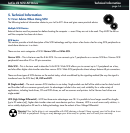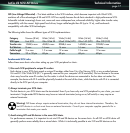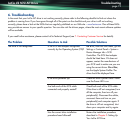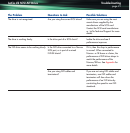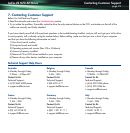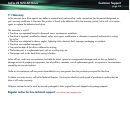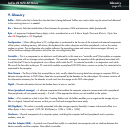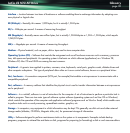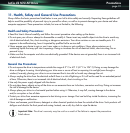
Glossary
page 30
LaCie d2 SCSI AIT Drive
Interface –
Junction between two items of hardware or software enabling them to exchange information by adopting com-
mon physical or logical rules.
KB (Kilobyte) –
Basically, this means 1,000 bytes, but it is actually 1,024 bytes.
KB/s –
Kilobytes per second. A means of measuring throughput.
MB (Megabyte) –
Basically means one million bytes, but is actually 1,024 kilobytes or 1,024 x 1,024 bytes, which equals
1,048,576 bytes.
MB/s –
Megabytes per second. A means of measuring throughput.
Medium –
Physical material, such as paper, disk or tape used to store computer data.
Operating System (OS) –
Software that controls the assignment and use of hardware resources such as memory, processor
time, disk space and peripherals. An operating system is the basis on which software (applications) run. Windows 98,
Windows NT, Mac OS and UNIX are among the most common.
Peripheral –
A generic term applied to printers, scanners, mice, keyboards, serial ports, graphics cords, diskette drives and
other computer subsystems. This type of peripheral often relies on its own control software, known as a peripheral driver.
Port, hardware –
A connection component (SCSI port, for example) that enables a microprocessor to communicate with a
compatible peripheral.
Port, software –
A memory address that identifies the physical circuit used to transfer information between a microprocessor
and a peripheral.
Software –
In a nutshell, software is a set of instructions for the computer. A set of instructions to perform a particular task is
called a program. There are two main types of software: system software (operating system such as Mac OS or Windows)
which controls the operation of the computer and application software (programs such as Word or Excel) which enable users
to perform tasks such as word processing, spreadsheet creation, graphics, etc.
Storage –
In computers, any equipment in which information may be kept. PCs generally use disk units and other external
storage media (diskettes, CD-ROMs, Magnetic disks, etc.) for permanent storage of information.
Utility –
Software designed to perform maintenance tasks on the system or its components. Examples include backup
programs, programs to retrieve files and data on disk, programs for preparing (or formatting) a disk or and resource editors.



